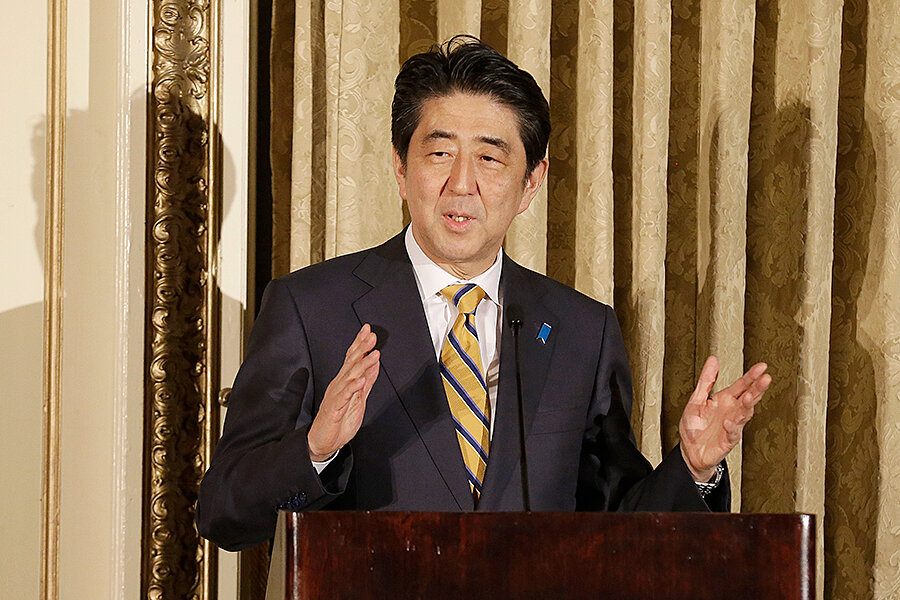Japan's Abe: 'we would like to capture the dynamism of Silicon Valley'
Loading...
Japan Prime Minister Shinzo Abe gave California's governor a hint of what it would be like inside a Japanese-made bullet train Thursday, displaying a train simulator for Gov. Jerry Brown during a meeting in San Francisco.
The Japanese leader also took time to check out tech innovations and lend support to expanded commercial ties on the first day of his three-day visit to California.
"There are some people in California who think of high speed rail as a mysterious, very expensive, exotic technology," Brown told Abe during their meeting at a hotel. "I hope people see high speed rail is a reality. If you were able to get a train in a hotel, I think I can get a train built from San Francisco to Los Angeles."
Brown has faced opposition in his efforts to build a $68-billion high-speed rail in California to connect San Francisco and Los Angeles.
Earlier in the day, Abe said during a speech at Stanford that his country needs to emulate Silicon Valley style, risk and innovation.
"We would like to capture the dynamism of Silicon Valley," he said while announcing plans to send representatives from 200 Japanese companies to "sail into the rough waves" of the region over the next five years.
He compared the effort to Japan sending players to Major League Baseball teams.
His country also will send 30 entrepreneurs to pitch ideas to Silicon Valley investors.
Abe said he plans to meet with Google and Facebook executives and visit electric carmaker Tesla Motors, which is building electric cars in a plant first opened by General Motors more than 50 years ago.
Abe's itinerary also includes a discussion with business leaders at a resort on Sand Hill Road, a busy stretch of street known as the epicenter of tech venture-capital companies that have launched Amazon, Facebook, Twitter and other tech giants.
"This Japanese administration has been focusing on changing its economy to a growth-based system built on innovation," said Japanese economic researcher Takeo Hoshi, a senior fellow at Stanford University's Freeman Spogli Institute for International Studies. "This is probably the best place in the world to look at that."
The region is home to Google, Apple and other leading tech firms that help drive the U.S. economy. Average annual employee earnings were $116,000, compared with $61,000 nationally. Venture capitalists invested $14.5 billion in businesses, and 76,450 new jobs were created.
During the visit, Abe will also meet with Japanese-Americans in San Francisco and Los Angeles, encourage Japanese students who are studying in the state, and announce policies to facilitate U.S. investment in Japan.
Abe planned to meet researchers later Thursday, including Japanese Nobel-winning stem cell researcher Shinya Yamanaka at the University of California, San Francisco-affiliated Gladstone Institute.
Earlier in the week, Abe made the Washington, D.C., rounds with a White House dinner and address to Congress.
While on Capitol Hill, he declared "history is harsh" and offered condolences for Americans who died in World War II.
He stopped short of offering an apology sought by U.S. lawmakers for Japanese conduct during the war, including sexual enslavement of tens of thousands of Asian women by Japan's imperial army.
About 50 people protested outside the auditorium in Stanford where Abe spoke. A small group of demonstrators also stood outside the San Francisco hotel where he met with Brown holding signs that read "Comfort Women Were Slaves. No Cover Up of War Crimes."







